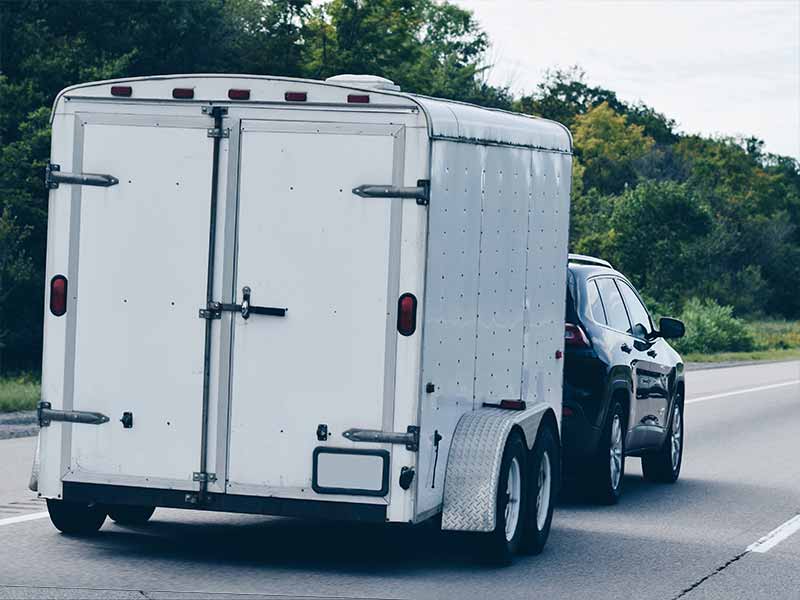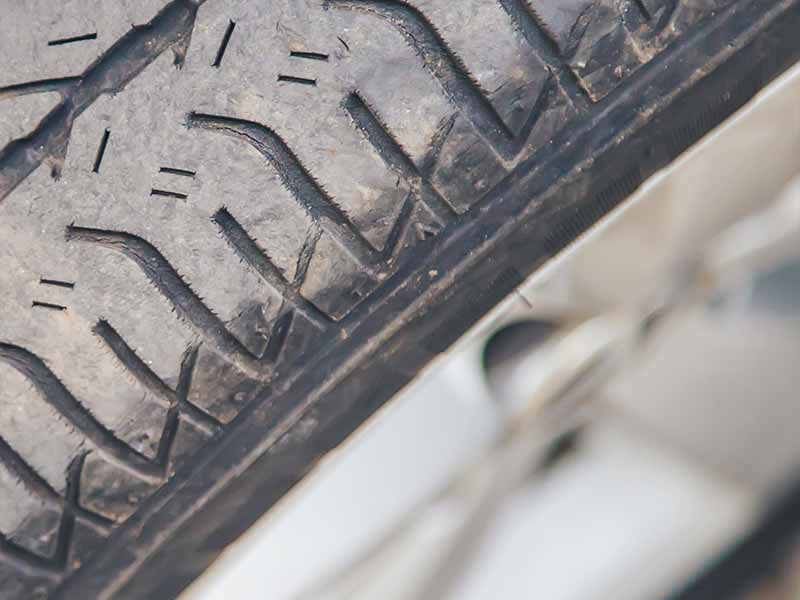Ever glance at your tire and notice those odd numbers and letters on the sidewall? It’s not a secret tire language or a cryptic code, but a crucial guide to your tire’s capabilities. The difference between a smooth, safe ride and a potential roadside disaster could be as simple as understanding these ratings.
What Does 100V Mean On A Tire?
The ‘100V’ on a tire stands for its load index and speed rating. Specifically, ‘100’ is the load index, indicating that the tire can carry a maximum load of 800 kilograms or 1764 pounds, and ‘V’ is the speed rating, suggesting that the tire can safely handle speeds up to 149 mph.
In this article, we’ll unravel the mystery behind these tire ratings, explore their history, dive deep into the meaning of the ‘100’ load index and the ‘V’ speed rating, and bust some common misconceptions about tire ratings. We’ll also cover the importance of choosing the right tires for your vehicle’s performance and safety.
Let’s take a closer look.
Other Common Load Indexes and Speed Ratings
- 91H: This tire can carry a maximum load of 615 kg (1356 lbs) per tire and handle speeds up to 130 mph.
- 95V: This tire can carry up to 690 kg (1521 lbs) and manage speeds up to 149 mph.
- 100H: This tire can carry a maximum load of 800 kg (1764 lbs) and safely handle speeds up to 130 mph.
- 104Q: This tire can carry up to 900 kg (1984 lbs) and safely handle speeds up to 99 mph.
It’s important to remember that these ratings should be used as a guide and are dependent on the tires being in good condition and properly inflated. Always consult your vehicle’s owner manual or a tire professional to ensure you’re using the correct tires for your specific vehicle and driving conditions.
Breaking Down Tire Speed Ratings
Alright, let’s dive into the nitty-gritty of tire speed ratings. Now, when you see a tire rating like ‘100V,’ you’re actually looking at two different ratings: a load index and a speed rating.
First off, the ‘100’ is a load index. This tells you how much weight that tire can safely carry. Think about it like this – if your car is a pack mule, the load index tells you how many sacks of flour that mule can carry without breaking a sweat.
Next up, we have the ‘V,’ which is the speed rating. This tells you the top speed that the tire can safely handle. Using our pack mule analogy, the speed rating would tell you how fast that mule can trot while carrying all those sacks of flour.
So, let’s delve a bit deeper into each of these ratings:
The Load Index
The load index is a numerical code that represents the maximum load that a tire can carry when inflated to its maximum safe pressure. The scale goes from 0 to 279, with each number representing a specific weight. For example, a load index of 100, like we see in ‘100V,’ means the tire can carry a maximum weight of 800 kilograms or 1764 pounds.
The Speed Rating
The speed rating, on the other hand, is represented by a letter. This letter tells you the maximum speed your tire can safely maintain for a sustained period of time. Speed ratings range from ‘A’ (the slowest) to ‘Y’ (the fastest). Our ‘V’ rating from ‘100V’ tells us that the tire can safely handle speeds up to 149 mph.

In-depth Look at the V Speed Rating
Let’s now shift gears and look at the ‘V’ part of our ‘100V’ rating. As we’ve learned, the ‘V’ represents the tire’s speed rating. But why does speed rating matter? And what does it really mean when a tire has a ‘V’ speed rating?
Think about speed ratings like a pair of running shoes. If you’re running a marathon, you wouldn’t wear sandals or boots, would you? You need shoes that can handle the long, fast-paced run. The same goes for tires. If you’re driving a sports car, you need tires that can handle high speeds.
Now, back to our ‘V’ rating. This means the tire is designed to handle speeds up to 149 mph. That’s pretty fast! Imagine running as fast as a cheetah, which is known as the fastest land animal. That’s the kind of speed we’re talking about.
But hold your horses! Just because a tire has a ‘V’ rating doesn’t mean you should go blasting down the road at 149 mph. Always obey the speed limits and drive safely. The speed rating is more about safety and performance at higher speeds, not a dare to push your vehicle to its limits.
Here’s something else to consider: your car’s speed capabilities. If your car can’t even reach speeds over 100 mph, then a ‘V’ rated tire is likely overkill. On the other hand, if you have a high-performance vehicle capable of higher speeds, a ‘V’ rating (or higher) might be appropriate.

How Load Index and Speed Ratings Affect Vehicle Performance
Now that we’ve gotten to know our ‘100V’ tire rating a bit better, let’s talk about why these numbers and letters matter. Why should we care about the load index and speed rating of our tires? It turns out they play a huge role in how your vehicle performs and how safe it is.
Load Index Impact
Imagine you’re a weightlifter, and you’re about to lift a barbell that’s way too heavy for you. What’s going to happen? You’ll probably struggle to lift it, and you might even drop it. The same principle applies to your vehicle’s tires.
If the load index is too low for your vehicle’s weight, your tires are going to have a hard time. They’ll wear out faster, and they could even blow out. That’s a recipe for a bad day on the road.
On the flip side, if the load index is too high, you might be spending more than necessary on tires that are overqualified for your vehicle. It’s all about finding the sweet spot for your specific vehicle.
Speed Rating Impact
Remember our marathon runner in the right shoes? The speed rating is a bit like that. If your tires’ speed rating is too low for your vehicle’s capabilities, they won’t be able to handle high speeds safely. This could lead to overheating, rapid wear, and even a blowout. Again, not what you want when you’re cruising down the highway.
On the other hand, a tire with a speed rating that’s too high for your vehicle is like wearing racing spikes for a leisurely walk. It’s overkill, and it might cost you more than necessary.
Striking the Balance
The load index and speed rating are all about safety and performance. They help you choose the right tires that can handle your vehicle’s weight and speed capabilities. So, always make sure your tires’ ratings match your vehicle’s needs.
Check your vehicle’s manual or placard on the driver’s side door jamb to find the manufacturer’s recommended tire specifications. You’ll get a smoother ride, your tires will last longer, and most importantly, you’ll be safer on the road.

Common Misconceptions about Tire Ratings
Alright, folks, we’ve learned a ton about tire ratings. But, like any topic, there are a few myths floating around out there. Let’s take a look at some of the most common misconceptions about tire load indexes and speed ratings, and set the record straight.
Misconception 1: The Higher the Load Index and Speed Rating, the Better the Tire
This might seem logical, but it’s not exactly true. While a high load index and speed rating mean the tire can carry more weight and handle higher speeds, it doesn’t necessarily mean it’s ‘better.’ It’s all about what’s right for your specific vehicle and driving conditions. It’s like buying hiking boots for a city walking tour – they’re great boots, but maybe not the best choice for the task at hand.
Misconception 2: Speed Ratings Indicate How Fast You Should Drive
This one is a biggie. Remember, folks, the speed rating is not a challenge or a suggestion! It represents the maximum speed the tire can handle, not how fast you should drive. Always obey speed limits and drive responsibly. No tire rating can protect you from reckless driving.
Misconception 3: Tires with Higher Load Indexes Improve Your Vehicle’s Carrying Capacity
Well, this one is a bit tricky. While tires with a high load index can carry more weight, they can’t increase your vehicle’s maximum load. That’s determined by the vehicle’s design and specifications, not the tires. The tires should match the vehicle’s needs, not the other way around.
Misconception 4: You Can Mix and Match Tires with Different Ratings
Mixing tires with different load indexes and speed ratings can lead to unstable and unsafe driving conditions. It’s like wearing a hiking boot on one foot and a sandal on the other – not exactly a comfortable or safe walk, right?

Choosing the Right Tires: Key Takeaways
We’ve taken quite the journey, haven’t we? We’ve delved deep into the world of tire ratings, specifically our pal ‘100V’. But what should we remember from all this? Let’s highlight the most important takeaways when it comes to choosing the right tires for your vehicle.
Know Your Ratings
Understanding your tire’s load index and speed rating is crucial. Remember, the load index (‘100’ in ‘100V’) represents the maximum weight the tire can carry. The speed rating (‘V’ in ‘100V’) indicates the maximum speed the tire can safely handle.
Match Your Vehicle’s Needs
Always choose tires that match your vehicle’s requirements. Check your vehicle’s manual or the placard on the driver’s side door jamb for the manufacturer’s recommended tire specifications. It’s like finding the perfect fitting shoe – the right fit will give you the best performance and safety.
Bust the Myths
Don’t fall for common misconceptions. Higher load indexes and speed ratings aren’t always ‘better,’ speed ratings aren’t driving speed recommendations, tires can’t increase your vehicle’s load capacity, and mixing and matching tires can lead to problems.
Safety and Maintenance
Maintaining your tires is as important as choosing the right ones. Regularly check your tire pressure and tread depth to ensure they’re within safe limits.
Consult Professionals
If you’re unsure about anything, don’t hesitate to consult a tire professional. They can help guide you to the best choice for your vehicle and driving needs.
Resources
Below are some links you may find helpful when learning about tires
- How to read tire speed ratings and load index – Tire Buyer
- What does “235/55 R 18 100 W PremiumContact 6 MO” mean? – Continental Tires
Final Thoughts
We’ve taken a thrilling journey from the surface of our tires right into the heart of their specifications, demystifying the secret language scrawled on their sidewalls. We’ve translated the cryptic ‘100V’ into something we can all understand – a testament to the tire’s strength and speed.
If there’s one key takeaway from this adventure, it’s this: understanding tire ratings, like the ‘100V’, is about more than just cracking a code. It’s about safety, performance, and making the most out of every journey on the road. It’s about knowing what our tires can handle, from weight to speed, and matching them perfectly to our vehicles and driving conditions.
Good luck and happy motoring.





